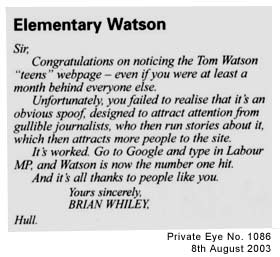This series of articles is designed to give you enough information to at least determine where I’m coming from, and what you might expect from my professional search engine optimisation services and/or my SEO seminar and workshop. For those who have certain skills (e.g. copywriting, marketing, web development) and/or relatively modest goals, they may be all you need to move forward on your own. If you quote (or benefit) from any of the following, I request only that you reward the content with a link. Cheers all.
Contrary to popular belief, a virus does not have to infect bodies at an exponential rate to be worthy of the name. If this were the case, we’d all be dead by now (or eating McDonalds Burger King and drinking Coke Pepsi all day, which amounts to much the same thing).
Plenty of viruses succeed without spreading beyond a single community, and in terms of viral marketing and how it can work in conjunction with search engine optimisation, sometimes a single community is all it takes to initiate a high search result. Once it is accessible via top search results for a popular/relevant search query, a page/site hosting a commanding idea (i.e. a virus targeting the mind) can be very difficult to shift, as it quickly becomes self-reinforcing.
Starting with an imperfect example (a famous Google bomb that started here at Bloggerheads), the following short list should help you to grasp this concept very quickly. I’ve chosen older mechanisms mainly to show off the sustained effect, because what I’m trying to get across here is the potential of a long term gain from what is typically a short-term exercise (most viral marketing mechanisms on the internets especially come and go very quickly).

Combining Viral Marketing with SEO
In these examples, a relatively small audience helped to secure a high search position that went on to reach an entirely different – and much larger – audience.
This is what is unique about my approach to viral marketing; if the concept is properly integrated into a search engine optimisation strategy, this can help you to get far more bang for your buck, possibly long after your attention-getting device has peaked (if you have the relevance to back it up).
To better visualise this, it helps to think of SEO and coordinating your keyword relevance as an effort to become aerodynamic (i.e. shaping and streamlining to increase lift), while the viral marketing mechanism acts as thrust;
Continuing the metaphor, and returning to the Tony Blair ‘liar’ example, the very best viral marketing mechanisms (see also: memes) are less about thrust and more about taking advantage of massive thermal updrafts; the ‘liar’ Google bomb worked as spectacularly as it did because an election was looming and at the time 44% of voters agreed that Blair had (at least) misled Parliament about Iraq. Whatever you believe personally, that’s a heck of a lot of updraft.
It should also be noted that Tom Watson especially owes a lot of his success to his willingness to engage openly and honestly with the electorate via his weblog (and more recently on Twitter), and it is on that note I would recommend you read Relevance #2 if you haven’t already.
If you’d care to learn more, I use these case studies and others to explain in more detail how this method works (and why) in my search engine seminar.
–
(Psst! This is also one of the few situations in which I would readily advise limited use of AdWords. If you have a link generating device that could easily hold its own once it earned a high position and/or reached enough people to keep the inbound links ticking over, it might be possible or even advisable to use AdWords as a first-stage booster rocket.)